The introduction of automotive vehicles has changed the entire civilization by giving swift personal transport to substantial sections of the population while generating an entire class of workforce and an aspect of admired culture. Now the automotive industry exists across the globe, with China currently the world’s leading manufacturer of automotive vehicles with a total production of more than 26 million vehicles in 2021.
From the development of the first automotive vehicle, the manufacturing processes have changed notably. During the mass production of the Ford Model T, a large workforce united to assemble the parts by hand. After that from 1960, robots have become the mainstream for performing parts assembly and welding in a short time. Other than assembly and welding, the production of automotive vehicles requires other operations such as milling, drilling, boring and turning, etc.
Generally, these operations are carried out by using a motorized tool such as a drilling, lathe, or milling machine. To accomplish the demand of the world’s population, the production of a vehicle has to be done in a very short time frame. For this, the process of CNC machining with computer control and automation benefits as a successful option for both production and prototyping.
CNC machines are commonly used in the automotive industry for producing car parts. CNC machines are equipped with precision tools that can accurately produce complex and intricate shapes. Some of the common car parts produced using CNC machines include engine components, suspension components, transmission components, and body parts.
Why CNC machining is used in the Automotive Industry?
To stay in this competitive market, manufacturers are redesigning vehicle models rapidly, and for this, there is a need of producing extremely complex and specialized shapes. The main concern with this is to maintain low body weight without abandoning the integrity and the total safety of the vehicle. For this, there is a need to machine the materials, which are prone to warping or fracturing during machining. Mostly, the automotive industries consume aluminum and other lightweight materials such as Poly Methyl Methacrylate (PMMA) and Acrylic glass. This implode-resistant PMMA is used as an alternative to glass, which is majorly used for lightning fixtures and it has its machining problems. Manufacturers are realizing the enhancement in desire for luxury technology in their automotive vehicles, which depends on the specialized electronic parts along with the tight tolerances. Without using Computer Numerical Control (CNC) machining, maintaining the integrity of the material and attaining these tight tolerances is a tough task. CNC machining is predominant in the automotive industry by its repeatability and timeliness of production to the assembly line. The automated CNC machines take G and M codes as inputs and convert them into a sequence of operations, by which the motorized tools such as drill, lathe, or mill will act accordingly. For this, the operator has to set up the workpiece material in the machine, by this the CNC will convert the workpiece into a finished product along with higher accuracy compared to conventional part machining.
Applications of CNC machining for the Automotive Industry
CNC (Computer Numeric Control) machining is widely used in the automotive industry for producing precise and high-quality parts. Some of the common applications of CNC machining in the automotive industry include:
- Engine Parts: CNC machining is used to produce engine parts such as cylinder heads, crankcases, and valve covers with high accuracy and repeatability.
- Suspension Parts: CNC machining is used to manufacture suspension parts like control arms, spindles, and knuckles.
- Transmission Parts: CNC machining is utilized for the production of transmission parts such as gearboxes, shifter forks, and clutch plates.
The CNC machines have transformed the entire automotive industry by producing similar parts in bulk quantity to achieve the market demand. The following are the different applications of CNC machines in the automotive industry.
1. The Engine Block
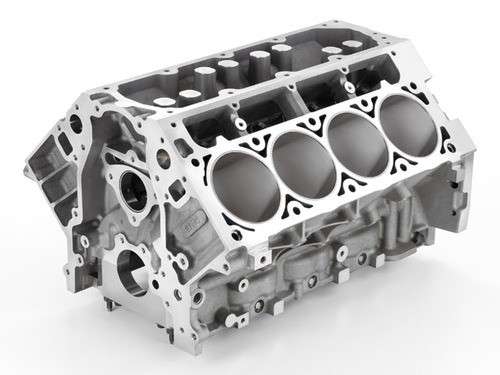
Automotive Engine Block
The engine is the most complicated and predominant part of any system that keeps the vehicle moving. For this engine, a large aluminum block can be machined into a cylinder block in which the engine cylinder contains pistons that will move up and down. Due to its complexity and wide variety of materials, CNC machining is a splendid method. The programming of the CNC machine is a tough and time-consuming task, which requires a high level of skill. Once it is prepared, without any assistance and an increase in the workforce, the machine can produce numerous engine blocks with the same accuracy and tolerance. The parts associated with the engine block such as the cylinder head, intake manifold, and parts that enclose the cylinders and cylinder block are generally produced by using CNC machines. The CNC machining includes CNC milling, CNC turning, Wire EDM, and other processes.
2. Lighting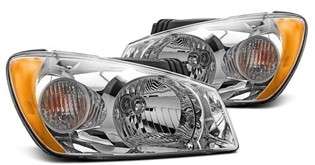
Headlights of a car
The CNC machine helps in building various parts that are required to generate light in automotive vehicles. For the driver, the light coming from the headlight of vehicles makes sure that it is spreading to a comfortable range on the road. For this, the reflectors made with PMMA and Acrylic glass need to be made with high accuracy and tight tolerances. CNC machining is used to produce these reflectors in bulk for mass production. The manufacturers can produce lighting for a vehicle, including both its headlights and interior lighting by machining PMMA.
3. Starter Motors
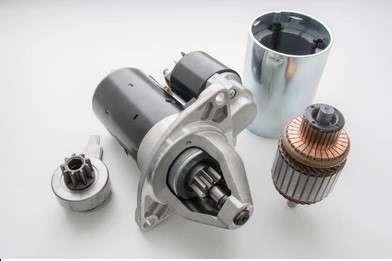
Starter motor of a car
The devices that make the internal combustion engine works on its own are known as starter motors. In order to maintain the consistency of the vehicles, these starter motors are paramount. It has a complex design and requires a manufacturing process with very high accuracy, precision, and tight tolerances. CNC machining is ideal for these constraints to produce the parts with precision, accuracy, and tolerances. The CNC machining will also allow the proper optimization of the vital parts of the automotive vehicle according to the design requirements.
4. Drive Axles

Drive Axles of a Car
In an automotive vehicle, the drive axle consists of two half axles which are connected by a constant velocity joint to a wheel. This critical part ensures the smooth functioning of the wheels, which requires high precision and accuracy. The CNC machining will benefit to produce these parts such as hypoid gears and bevel gears of the drive axle mechanism.
5. Gear Box
The automotive vehicle’s torque and speed are altered by the gearbox which is a part of the vehicle transmission system. The design of a gearbox is complicated and requires very tight tolerances to occupy a small space. During manufacturing, a slight error in the tolerances can cause misalignment, gear wear, and gear failure. Majority of the automotive manufacturing companies are minimizing the use of traditional gear-making processes such as gear hobbing by using CNC machining. CNC machining allows the production of high-quality gears with high accuracy, precision, and tight tolerances by eliminating the need for additional post-processing operations.
6. Interior and Roof Panels
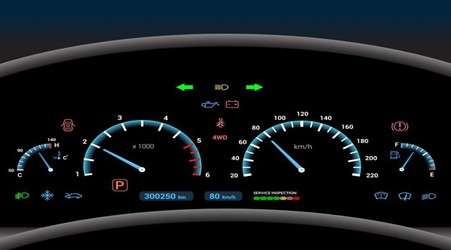
Dashboard of a car
The performance of modern-day automotive vehicles is enhanced by using lightweight materials. Most automotive manufacturers are utilizing polymers and plastics in order to reduce the use of steel to make the interior and roof panels. The panels are light in weight and can be twice as thick as steel. CNC machining is used to manufacture these panels with high precision and surface finish. Majorly, from a block of Poly Propylene (PP), the dashboard frames, speedometer, and gas gauges are produced by using the CNC machine. With this, the cut-outs of these parts will be aligned perfectly without the use of any other joining mechanism.
7. Customized Automotive Wheels
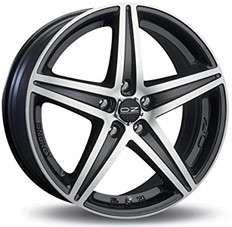
Alloy wheel of a car
8. Custom Parts
By using CNC machining, several other parts of the automotive vehicle are produced such as suspension components, exhaust parts, carburetor housings, fluid system components, bushings, value retainers, spinners, and brakes. This manufacturing process is also helpful to produce customized parts of specific vehicles by altering the part design with CAD.
Advantages of using CNC machining in the Automotive Industry
1. Speed
For the automotive industry, CNC machining plays a significant role because of its speed. The machining operations can be performed quickly with little workforce intervention as it is relying on computer instructions. This machining is used to produce automotive parts in large volumes, as the manufacturers are looking for an idle process that will eliminate human errors and fatigue. By using this machining, the manufacturers are seeing a surge in productivity, specifically because the computer instructions can be repeated numerous times.
2. Automation
In CNC machining, automation is an advantage, which enhances the production time compared to the conventional process. The automation is more streamlined for a part to manufacture and the robotic arms will assist in the removal of the part once completed from the machine.
3. Repeatability
For longer time periods, A CNC machine can repeat its functions without any discrepancy at a rapid rate. By using this machine which is controlled by a computer, the part can be produced several times without losing its consistency between the parts. For the bulk production of a single part, automotive manufacturers are extremely dependent on this machining process. The production of large volumes by using CNC machining is more cost-effective due to the less workforce intervention. This is one of the best advantages of CNC machines in the automotive industry.
4. Accuracy and Precision
Most automotive manufacturers believe that CNC machining is an idle manufacturing process because of its high accuracy and precision. The computer-controlled and automated nature of the process does not allow any possibility of error and can provide tolerances of ±0.001 ̋. The automotive industry demands these fine tolerances since the malfunction of any critical part of the vehicle will result in severe consequences to the end user. The CNC machine can produce complex automotive parts with high accuracy, and precision and along with tight tolerances.
FAQ
What are the kinds of CNC machines used in the automotive industry?
In the market, there are numerous types of CNC machines are available. The automotive industry requires different types of CNC machines depending on the complexity of the parts. Simple parts can be produced by using the simple CNC (2-axis or 3-axis), but complex parts such as gearboxes can only be performed by using the sophisticated CNC such as 4-axis or 5-axis. These machines can rotate along several axes and can produce more accurate and tight tolerances. The type of machine depends on the process and there are five types of CNC machines available such as CNC turning machine, milling machine, drilling machine, laser machine, and plasma cutting machine.
What are the materials used in automotive CNC machining?
Many types of materials are compatible with CNC machining, but the highly machinable is the best for the process. The highly machinable automotive materials include metals such as aluminum, brass, stainless steel, alloy steel, etc, and plastics such as ABS, PEEK, PMMA, Polycarbonate, PTFE, Nylon, etc, wood, foam, and composite materials. Low-machinable materials such as titanium are also used in the automotive industry but for titanium, special cutting tools are required.
What is the difference between 3D printing and CNC machining for the automotive industry?
3D printing is an additive manufacturing process that produces the final product by introducing successive layers of materials. On the other hand, CNC machining is a subtractive process that produces the final product by removing the layers of materials from the workpiece block. Both processes are highly accurate, more customization is possible by 3D printing and a wide range of materials are compatible with CNC machining.




0 Comments